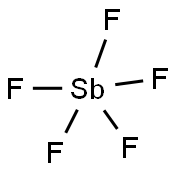Tin sulfide
Synonym(s):Herzenbergite;Stannous sulfide;Tin monosulfide
- CAS NO.:1314-95-0
- Empirical Formula: SSn
- Molecular Weight: 150.77
- MDL number: MFCD00011245
- EINECS: 215-248-7
- SAFETY DATA SHEET (SDS)
- Update Date: 2024-09-04 16:41:41

What is Tin sulfide?
Description
Tin sulfide (SnS), with a direct energy band-gap of about 1.3 eV, and a high optical absorption coefficient over 5 × 104 cm-1,?is a promising new candidate for applications in the next generation of photovoltaic solar cells. Made of earth-abundant, relatively cheap and environmentally-nontoxic elements, SnS is solution processable and stable in both alkaline and acidic conditions.
What are the applications of Application
In the form of single or few-layer thin films,?exfoliated SnS?nanosheets have various applications.?These include light emitters, field effect transistors (FETs), gas sensors, photodetectors, thermoelectric and photovoltaic devices.
Synthesis
Tin sulfide?(SnS)?is manufactured using chemical vapour transport (CVT) crystallisation, with crystals having a purity in excess of 99.999%.
Preparation
Synthetic?- Chemical Vapour Transport (CVT)
Chemical properties
Dark-gray or black, crystalline powder. Soluble in concentrated hydrochloric acid (decomposes); insoluble in dilute acids and water.
The Uses of Tin sulfide
The p-type IV-VI semiconductor tin(II) sulfide is of interest for use in optoelectronic devices. SnS is also used as a nontoxic, inexpensive component in heterojunction photovoltaic devices.
The Uses of Tin sulfide
Polymerization catalyst.Tin(II) sulfide is used as a polymerization catalyst. It is also used as a friction material. Further, it is used in optoelectronic device as well as a component in heterojunction photovoltaic devices.
Hazard
Toxic material.
Flammability and Explosibility
Not classified
Properties of Tin sulfide
| Melting point: | 882°C |
| Boiling point: | 1202.34°C (estimate) |
| Density | 5.22 g/mL at 25 °C(lit.) |
| solubility | insoluble in H2O; soluble in concentrated acid solutions |
| form | -8 Mesh |
| Specific Gravity | 5.08 |
| Water Solubility | Soluble in conc. HCl, hot conc. H{2}SO{4}.Insoluble in water. |
| Merck | 14,8791 |
| Solubility Product Constant (Ksp) | pKsp: 25.00 |
| Exposure limits | ACGIH: TWA 2 mg/m3 NIOSH: IDLH 100 mg/m3; TWA 2 mg/m3 |
| CAS DataBase Reference | 1314-95-0(CAS DataBase Reference) |
| EPA Substance Registry System | Tin sulfide (SnS) (1314-95-0) |
| Bandgap | 1.07 -1.32 eV |
| Electronic properties | 2D semiconductor |
| color | Brown/Yellow |
Safety information for Tin sulfide
| Signal word | Warning |
| Pictogram(s) |
 Exclamation Mark Irritant GHS07 |
| GHS Hazard Statements |
H315:Skin corrosion/irritation H319:Serious eye damage/eye irritation H335:Specific target organ toxicity, single exposure;Respiratory tract irritation |
| Precautionary Statement Codes |
P261:Avoid breathing dust/fume/gas/mist/vapours/spray. P304+P340:IF INHALED: Remove victim to fresh air and Keep at rest in a position comfortable for breathing. P305+P351+P338:IF IN EYES: Rinse cautiously with water for several minutes. Remove contact lenses, if present and easy to do. Continuerinsing. P405:Store locked up. |
Computed Descriptors for Tin sulfide
New Products
Tubulysin B Tubulysin C Tubulysin I Tubulysin H Tubulysin F Potassium HMDS (1.0 M in THF) CYCLOBUTYLAMINE HYDROCHLORIDE Isoxazole, 3-[[[5-(difluoromethoxy)-1-methyl-3-(trifluoromethyl)-1H-pyrazol-4-yl]methyl]thio]-4,5-dihydro-5,5-dimethyl- Cyclobutanamine, 3,3-difluoro- (9CI) 3,3-Difluoropyrrolidine (R)-1-BOC-3-FLUORO PYRROLIDINE 2H-Pyran, 4-ethynyltetrahydro- (R)-Methanesulfonic acid 3-(3-fluoro-4- morpholin-4-yl- phenyl)-2-oxo- oxazolidin-5-ylmethyl (R)-1-Aminoindan Hydrochloride 4-N-Methylamino- 3-nitro benzoic acid Latanoprostene Bunod Lubiprostone Magnesium Trisilicate 7-Methoxyquinoline-4-carbonitrile 1H-Imidazole-4-carbonitrile 7-Methoxyquinoline-4-carboxylic acid (2R,3S)-2-Azido-3-methylpentanoic acid Quetiapine EP Impurity D Simvastatin Acid Triol Sodium SaltRelated products of tetrahydrofuran








You may like
-
 Tin(II) sulfide CAS 1314-95-0View Details
Tin(II) sulfide CAS 1314-95-0View Details
1314-95-0 -
 ethyl 2-formylthiazole-4-carboxylate 73956-17-9 99%View Details
ethyl 2-formylthiazole-4-carboxylate 73956-17-9 99%View Details
73956-17-9 -
 Tubulysin D 99%View Details
Tubulysin D 99%View Details
309935-57-7 -
![Methyl (2R)-2-amino-3-[(triphenylmethyl)sulfanyl]propanoate 58885-35-1 99%](https://img.chemicalbook.in//Content/image/CP5.jpg) Methyl (2R)-2-amino-3-[(triphenylmethyl)sulfanyl]propanoate 58885-35-1 99%View Details
Methyl (2R)-2-amino-3-[(triphenylmethyl)sulfanyl]propanoate 58885-35-1 99%View Details
58885-35-1 -
 (R)-methyl 2-isocyano-3-(tritylthio)propanoate 99%View Details
(R)-methyl 2-isocyano-3-(tritylthio)propanoate 99%View Details -
 Tubulysin G 99%View Details
Tubulysin G 99%View Details
799822-08-5 -
 205304-87-6 Tubulysin B 99%View Details
205304-87-6 Tubulysin B 99%View Details
205304-87-6 -
 205304-86-5 99%View Details
205304-86-5 99%View Details
205304-86-5